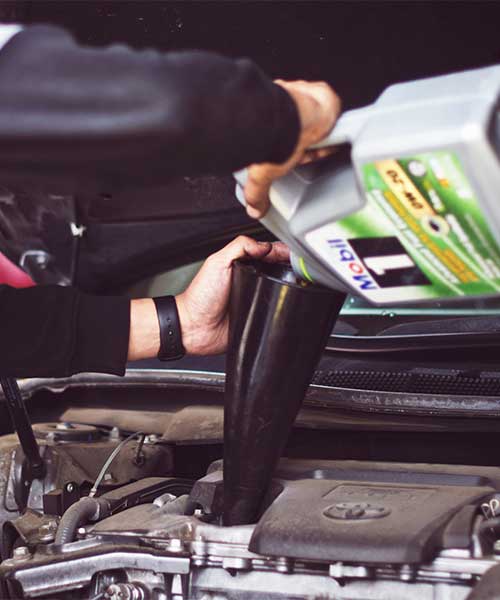



LayerZero is an omnichain interoperability protocol enabling seamless communication between decentralized applications across disparate blockchains. LayerZero fundamentally reimagines cross-chain communication by establishing direct, trustless bridges between chains without relying on intermediate consensus mechanisms. The core innovation of LayerZero lies in its lightweight client architecture, which minimizes trust assumptions while maximizing security and efficiency. By leveraging LayerZero, developers can create truly interconnected applications that transcend single-chain limitations.
LayerZero employs a unique design with two key components: Oracles and Relayers operating in parallel. This dual-entity approach ensures message integrity without introducing centralized points of failure. When a transaction originates on Chain A destined for Chain B, LayerZero's endpoint contracts trigger independent verification paths. The Oracle delivers block headers while the Relayer provides transaction proofs. Only when both independently verifiable data points match does LayerZero execute the cross-chain operation. This elegant solution makes LayerZero exceptionally secure against common bridge vulnerabilities.
The blockchain ecosystem suffers from severe fragmentation, with thousands of networks operating in isolation. LayerZero directly addresses this fragmentation by enabling arbitrary data transfer between EVM and non-EVM chains alike. Unlike traditional bridges that require wrapped assets, LayerZero facilitates native asset transfers and complex contract calls. Projects building with LayerZero can seamlessly integrate functionalities across Ethereum, BNB Chain, Polygon, Avalanche, Solana, Aptos, and numerous other networks. The versatility of LayerZero makes it the backbone of the emerging omnichain paradigm.
LayerZero introduces Ultra Light Nodes – smart contracts that emulate the security of full nodes without the computational overhead. These ULNs form the critical infrastructure enabling LayerZero to verify transactions efficiently. When a dApp uses LayerZero, its smart contracts interact with ULNs deployed on each supported chain. These ULNs only require storing block headers rather than entire chain histories, making LayerZero both gas-efficient and scalable. The ULN model exemplifies how LayerZero achieves security parity with light clients at minimal cost.
LayerZero provides several groundbreaking technical benefits that distinguish it from legacy interoperability solutions. First, LayerZero offers configurable trustlessness – developers can choose their preferred Oracle and Relayer providers or even run their own. This flexibility makes LayerZero adaptable to various security requirements. Second, LayerZero supports arbitrary data payloads, enabling not just token transfers but complex cross-chain smart contract interactions. Third, the protocol's gas efficiency outperforms alternatives, with LayerZero transactions costing significantly less than competing bridges.
LayerZero's security model relies on the principle of component isolation. By separating Oracle and Relayer functions, LayerZero eliminates single points of failure. Even if one provider is compromised, the dual-verification mechanism prevents invalid state transitions. Furthermore, LayerZero allows applications to implement custom security modules for additional validation layers. This defense-in-depth approach makes LayerZero resilient against both technical failures and malicious attacks. Security audits consistently validate LayerZero's robust architecture.
The true power of LayerZero manifests through Omnichain Applications – dApps that function cohesively across multiple blockchains simultaneously. Developers using LayerZero can deploy single codebases that interact natively with every connected chain. For example, a decentralized exchange built with LayerZero can pool liquidity from Ethereum, Arbitrum, and Optimism without asset wrapping. Similarly, NFT projects utilizing LayerZero enable cross-chain minting and trading with unified metadata. The LayerZero SDK simplifies OApp development with standardized cross-chain primitives.
LayerZero transforms cross-chain token transfers through its Native Asset Delivery system. Unlike traditional bridges that lock assets and mint synthetic tokens, LayerZero enables direct transfers preserving asset provenance. When transferring USDC via LayerZero, the exact same contract-minted tokens appear on the destination chain. This native transfer capability eliminates wrapped token risks and liquidity fragmentation. Major stablecoin issuers increasingly adopt LayerZero for canonical cross-chain transfers due to its security advantages.
The LayerZero ecosystem has experienced explosive growth since mainnet launch, with over 200 integrated applications spanning DeFi, NFTs, gaming, and infrastructure. Leading DeFi protocols like Stargate Finance (the first OApp) leverage LayerZero for cross-chain liquidity pooling. NFT marketplaces employ LayerZero for cross-chain collections, while gaming platforms use it for interoperable asset transfers. The total value secured (TVS) by LayerZero consistently ranks among the top interoperability protocols, demonstrating strong market confidence.
LayerZero prioritizes developer accessibility through comprehensive documentation, SDKs, and developer tools. The LayerZero testnet supports rapid prototyping across multiple chains, while mainnet deployment requires minimal configuration. Developers appreciate LayerZero's gas-efficient message passing, which keeps operational costs predictable. The protocol's modular design allows teams to focus on application logic rather than low-level cross-chain mechanics. LayerZero's growing GitHub repository showcases active community contributions and reference implementations.
While LayerZero currently operates without a native token, its economic model involves fee structures for cross-chain message delivery. Applications pay transaction fees in the native gas currency of source chains when utilizing LayerZero services. These fees compensate Oracle and Relayer operators for their services. The protocol's efficient design keeps fees substantially lower than alternative solutions. Future developments may introduce additional economic mechanisms to further decentralize the LayerZero network and incentivize participation.
LayerZero's decentralized relayer network operates through a permissionless participation model. Independent relayers can register to service specific chains or applications, earning fees for successful message delivery. The protocol implements slashing conditions to penalize malicious behavior, ensuring proper economic alignment. This open relayer market creates competitive fee environments while maintaining LayerZero's security guarantees. Projects can also operate dedicated relayers for enhanced performance when using LayerZero infrastructure.
When evaluated against competing interoperability solutions, LayerZero demonstrates clear technical superiority. Unlike middleware protocols that route through central chains, LayerZero establishes direct chain-to-chain communication paths. Compared to atomic swap bridges, LayerZero supports arbitrary data payloads beyond simple token transfers. Versus optimistic verification models, LayerZero provides immediate finality without challenge periods. The protocol's unique architecture makes LayerZero the most versatile and secure interoperability framework available.
Independent analyses confirm LayerZero's performance advantages. Cross-chain transactions via LayerZero typically complete within 2-3 minutes – significantly faster than most competing solutions. Gas costs average 30-50% lower than alternative bridges due to LayerZero's efficient verification mechanism. During network congestion events, LayerZero maintains consistent performance while other bridges experience delays or fee spikes. These metrics demonstrate how LayerZero delivers both technical innovation and practical efficiency.
The LayerZero team maintains an ambitious development roadmap focused on three key areas: expanded chain support, enhanced security features, and developer tooling improvements. Upcoming LayerZero upgrades will integrate additional non-EVM chains including Bitcoin and Cosmos-based networks. Zero-knowledge proof integrations are being explored to augment privacy features. The LayerZero V2 specification introduces modular security components and improved message compression algorithms. These advancements will further cement LayerZero's position as the leading interoperability protocol.
LayerZero pioneers true cross-chain composability – the ability for smart contracts on different chains to interact seamlessly. This breakthrough enables unprecedented DeFi innovations like cross-chain money markets and multi-chain yield aggregators. With LayerZero, a liquidation event on Avalanche can trigger collateral rebalancing on Polygon through a single atomic operation. Such complex interactions were previously impossible without centralized intermediaries. LayerZero effectively creates a unified execution environment across all connected blockchains.
Beyond decentralized applications, LayerZero presents compelling enterprise use cases. Financial institutions exploring blockchain settlement can utilize LayerZero for cross-chain asset transfers between permissioned and public networks. Supply chain solutions benefit from LayerZero's ability to synchronize data across consortium chains and public ledgers. The protocol's permissioning capabilities allow enterprises to implement custom security policies while leveraging LayerZero's core infrastructure. This enterprise potential significantly expands LayerZero's addressable market beyond Web3 native applications.
LayerZero contributes to blockchain sustainability through computational efficiency. By eliminating redundant verification processes and minimizing on-chain operations, LayerZero reduces the carbon footprint of cross-chain interactions. A single LayerZero message consumes less energy than equivalent transactions on alternative bridges. As environmental concerns gain prominence in blockchain discourse, LayerZero's efficient architecture positions it as an environmentally conscious interoperability solution.
LayerZero undergoes rigorous security evaluation through multiple channels. Leading audit firms including Zellic, Peckshield, and CertiK have conducted comprehensive protocol reviews. Additionally, LayerZero employs formal verification methods to mathematically prove the correctness of critical components. The protocol's bug bounty program incentivizes white-hat hackers to identify vulnerabilities. These multilayered security measures ensure LayerZero maintains the highest standards for cross-chain value transfer.
LayerZero follows a deliberate decentralization strategy, progressively transferring control from the founding team to community stakeholders. Future governance mechanisms will allow token holders to vote on protocol upgrades and parameter adjustments. The relayer network already operates in a permissionless manner, with plans to decentralize Oracle services in subsequent phases. This measured approach ensures LayerZero maintains stability while evolving toward full community ownership.
LayerZero represents a paradigm shift in blockchain architecture – from isolated networks to interconnected ecosystems. As the foundational protocol for omnichain applications, LayerZero enables unprecedented innovation in decentralized systems. The technology pioneered by LayerZero will ultimately make blockchain boundaries invisible to end users while preserving security and sovereignty. With its elegant design, growing ecosystem, and relentless focus on decentralization, LayerZero is positioned to become the standard communication layer for the multi-chain universe. The continued evolution of LayerZero will accelerate blockchain adoption across industries and use cases worldwide.
Search on Youtube!
Tempor erat elitr rebum at clita. Diam dolor diam ipsum sit. Aliqu diam amet diam et eos. Clita erat ipsum et lorem et sit, sed stet lorem sit clita duo justo magna dolore erat amet
Years Experience
Expert Technicians
Satisfied Clients
Compleate Projects

Tempor erat elitr rebum at clita. Diam dolor diam ipsum sit. Aliqu diam amet diam et eos. Clita erat ipsum et lorem et sit, sed stet lorem sit clita duo justo magna dolore erat amet
Quality Servicing
Expert Workers
Modern Equipment
Read More
Tempor erat elitr rebum at clita. Diam dolor diam ipsum sit. Aliqu diam amet diam et eos. Clita erat ipsum et lorem et sit, sed stet lorem sit clita duo justo magna dolore erat amet
Quality Servicing
Expert Workers
Modern Equipment
Read More
Tempor erat elitr rebum at clita. Diam dolor diam ipsum sit. Aliqu diam amet diam et eos. Clita erat ipsum et lorem et sit, sed stet lorem sit clita duo justo magna dolore erat amet
Quality Servicing
Expert Workers
Modern Equipment
Read More
Tempor erat elitr rebum at clita. Diam dolor diam ipsum sit. Aliqu diam amet diam et eos. Clita erat ipsum et lorem et sit, sed stet lorem sit clita duo justo magna dolore erat amet
Quality Servicing
Expert Workers
Modern Equipment
Read MoreEirmod sed tempor lorem ut dolores. Aliquyam sit sadipscing kasd ipsum. Dolor ea et dolore et at sea ea at dolor, justo ipsum duo rebum sea invidunt voluptua. Eos vero eos vero ea et dolore eirmod et. Dolores diam duo invidunt lorem. Elitr ut dolores magna sit. Sea dolore sanctus sed et. Takimata takimata sanctus sed.





Profession
Tempor erat elitr rebum at clita. Diam dolor diam ipsum sit diam amet diam et eos. Clita erat ipsum et lorem et sit.

Profession
Tempor erat elitr rebum at clita. Diam dolor diam ipsum sit diam amet diam et eos. Clita erat ipsum et lorem et sit.

Profession
Tempor erat elitr rebum at clita. Diam dolor diam ipsum sit diam amet diam et eos. Clita erat ipsum et lorem et sit.

Profession
Tempor erat elitr rebum at clita. Diam dolor diam ipsum sit diam amet diam et eos. Clita erat ipsum et lorem et sit.